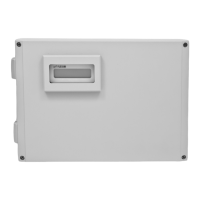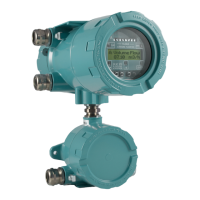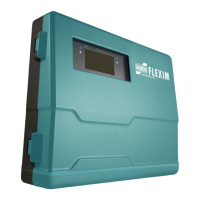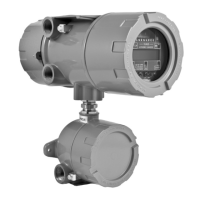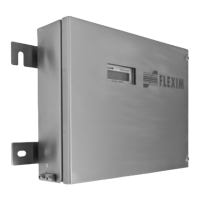3 General principles
FLUXUS F501 3.1 Measurement principle
13
UMFLUXUS_F501V1-3EN, 2020-06-30
3.1.3 Measurement of the flow velocity in the NoiseTrek parallel beam mode
Pipes with a small pipe diameter or fluids which strongly attenuate the ultrasonic signal can cause a reduction of the transit
time in the fluid with the result that the signal quality is no longer sufficient. In this case the NoiseTrek parallel beam mode
has to be used.
The NoiseTrek parallel beam mode uses the presence of gas bubbles and/or solid particles in the fluid.
Ultrasonic signals are sent into the fluid at short intervals, reflected by the gas bubbles and/or the solids particles and
again received. This leads to a better signal quality. The transducers are mounted in parallel on the pipe at a small dis-
tance, see Fig. 3.4.
A measurement in TransitTime mode is not possible when working with this measurement arrangement.
The transit time difference t of 2 consecutive ultrasonic signals is determined. It behaves proportionately to the distance
the gas bubble/solid particle is covering between 2 consecutive pulses and thus, to the average flow velocity of the fluid,
see Fig. 3.5.
Fig. 3.3: Transit time difference Δt
1 – signal in the flow direction
2 – signal against the flow direction
Fig. 3.4: Measurement arrangement in the NoiseTrek parallel beam mode
Fig. 3.5: Measurement of the flow velocity in the NoiseTrek parallel beam mode
1 2
Δt
flow direction
transducers transducers
flow direction
ultrasonic signal S
1
gas bubble or
solids particle
ultrasonic signal S
2
pulse at time t
gas bubble or
solids particle
pulse at time t + Δt
p
transit time t
1
transit time t
2
